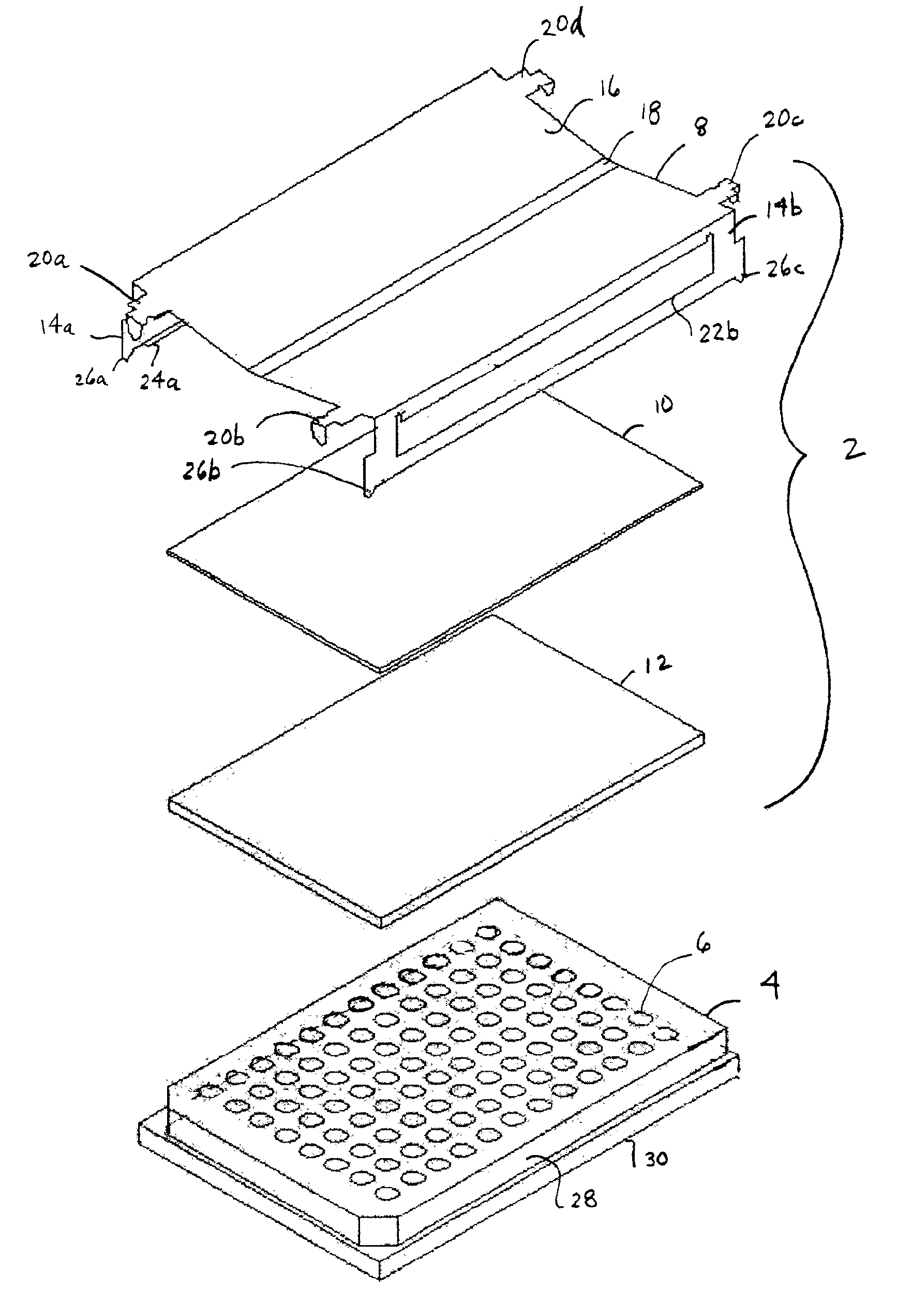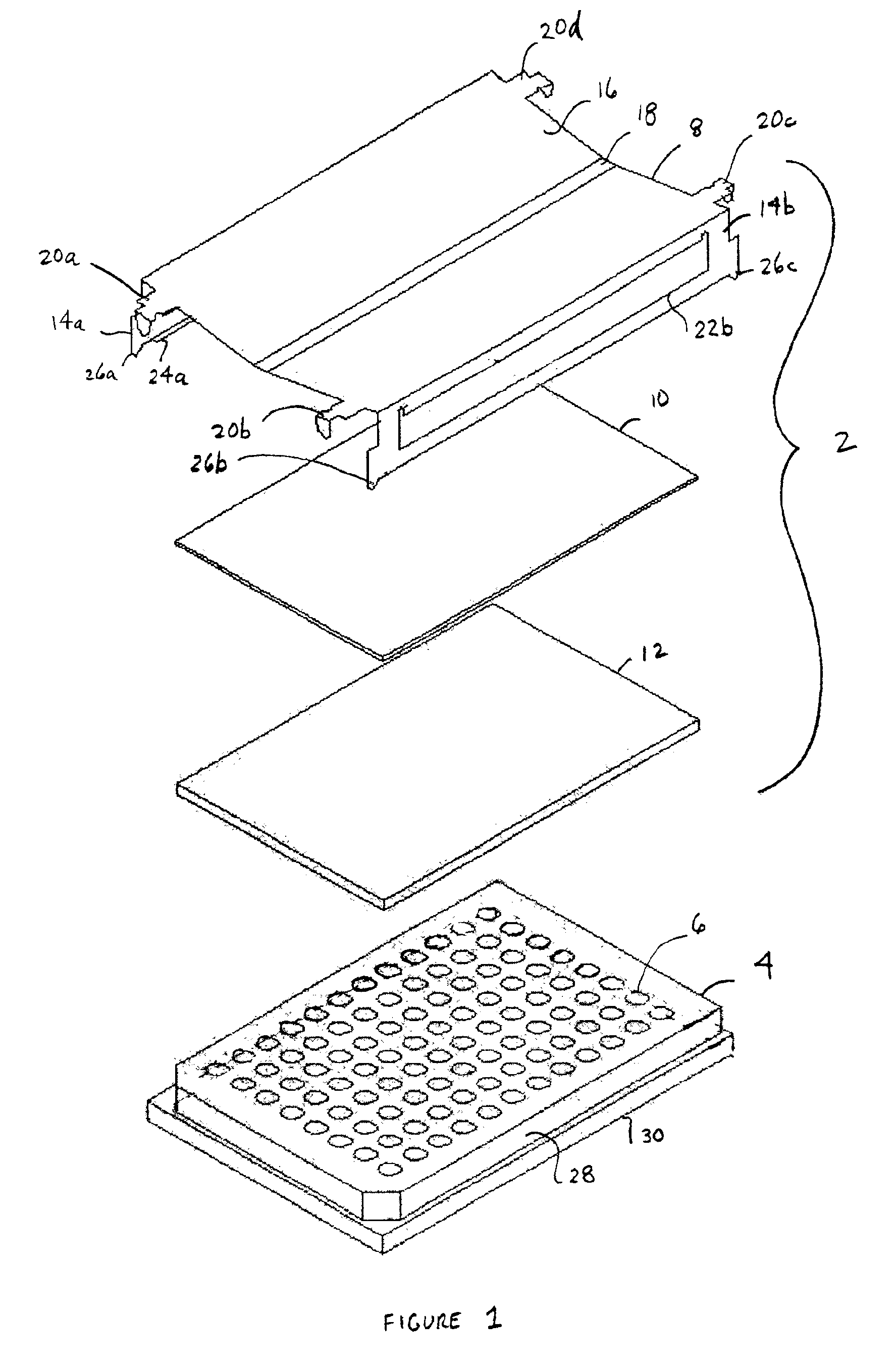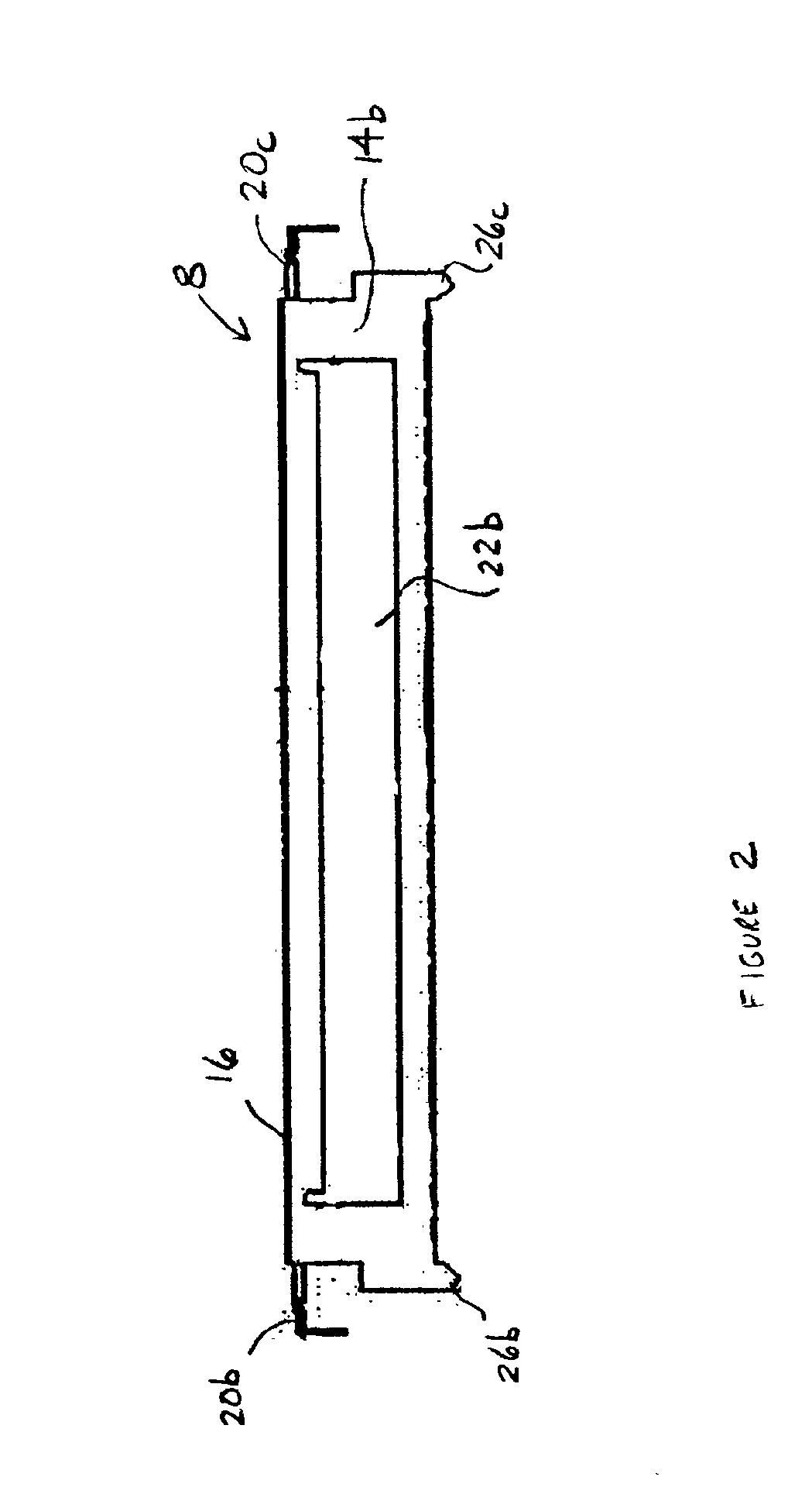Microplate cover assembly
a microplate and assembly technology, applied in the field of microplates, can solve the problems of non-uniform distribution, many conventional seals do not provide a uniform seal across all of the wells of the microplate, and the conventional seals suffer from significant disadvantages
- Summary
- Abstract
- Description
- Claims
- Application Information
AI Technical Summary
Benefits of technology
Problems solved by technology
Method used
Image
Examples
Embodiment Construction
[0018]EMBODIMENT FIG. 1 shows a microplate cover assembly 2 which may be used to seal wells 6 contained in a microplate 4. Microplate 4 is of conventional design and is available from any of a number of commercial sources in any of 24, 96 or 384 well formats, and may include others. It should be understood that the term “microplate” as used herein includes, but is not limited to, shallow well, deepwell, half deepwell and PCR type plates as well as minitube racks. It should also be understood that the present invention is not limited to any particular matrix size.
[0019]A cover 8 is disposed on a pressure plate 10. Pressure plate 10 is disposed on a layer of sealing material 12, which in turn is disposed on the top surface of microplate 4. Cover 8 includes an angled top surface 16 with a narrow, generally flat portion 18 extending laterally along the central axis of the cover. Cover 8 includes sides 14a and 14b which are generally orthogonal to top surface 16. Extending laterally from...
PUM
| Property | Measurement | Unit |
|---|---|---|
| compressive force | aaaaa | aaaaa |
| pressure | aaaaa | aaaaa |
| resilient force | aaaaa | aaaaa |
Abstract
Description
Claims
Application Information
 Login to View More
Login to View More - R&D
- Intellectual Property
- Life Sciences
- Materials
- Tech Scout
- Unparalleled Data Quality
- Higher Quality Content
- 60% Fewer Hallucinations
Browse by: Latest US Patents, China's latest patents, Technical Efficacy Thesaurus, Application Domain, Technology Topic, Popular Technical Reports.
© 2025 PatSnap. All rights reserved.Legal|Privacy policy|Modern Slavery Act Transparency Statement|Sitemap|About US| Contact US: help@patsnap.com



